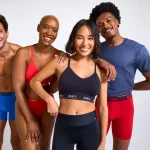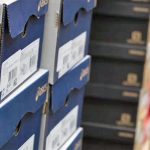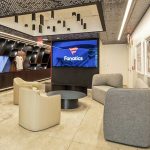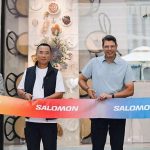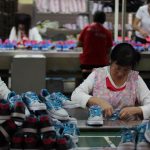Helen Of Troy CEO Julien Mininberg said the company’s Osprey brand surpassed expectations for the third straight quarter with help from improving travel demand, but the Hydro Flask business continued to be pressured by a shift in consumer preference from insulated bottles to tumblers.
On a conference call with analysts to discuss detail of the parent company’s fiscal second quarter results, Mininberg said overall sales in the Home & Outdoor segment, which contains the OXO, Hydro Flask and Osprey brands, were essentially flat in the quarter ended August 31, declining 0.2 percent to $240.0 million from $240.6 million in the year-ago comparable quarter.
The overall decrease was driven by a decline from organic business of $1.1 million, or 0.5 percent, primarily due to a brick & mortar sales decline in the insulated beverage category, reduced home category sales in the club and closeout channels, and the impact of the Bed, Bath & Beyond bankruptcy and subsequent liquidation. These factors were partially offset by an increase in online channel sales, primarily driven by the launch of the new Hydro Flask travel tumbler, stronger consumer demand for travel-related products, higher brick & mortar home category sales due to new retailer distribution and improved replenishment orders, and an increase in closeout channel sales in the insulated beverage and travel categories.
Hydro Flask Hit By Weakness in Insulated Bottles
Addressing the performance of Hydro Flask, Mininberg said the broader insulated beverage category continued to be skewed toward tumblers with a further decline in the insulated bottle subcategory.
One highlight was a strong reception seen to the soft launch on June 21 of a new travel tumbler, exclusively on hydroflask.com. Mininberg said, “The launch drove traffic to the website, and we benefited from a halo effect in our base business, including an increase in personalized orders. We expanded online distribution of our travel tumbler in late August, and I’m pleased to say, it continues to resonate well with consumers.”
Mininberg said the product was ranked number one new release in water bottles and number one new release in sport and outdoors on Amazon. Mininberg said, “We began further rollout to retailers and started to show up on shelves in September with continued ramp up in October.”
Hydro Flask also recently launched a new insulated sport bottle with an ergonomic shape “that fits well in your hand at the gym as it does in the bottle cage of your bike,” he said.
Mininberg added, “We believe that Hydro Flask travel tumbler, sport bottle, and other innovations position us well for the upcoming holiday season.”
Osprey Boosted By Travel’s Recovery
On Osprey, Mininberg said the outdoor backpacks brand, acquired in December 2021, “achieved strong growth” in the quarter, fueled by accelerated travel demand and an improved inventory position compared to fiscal 2023 when COVID-related factory closures curtailed supply.
“Osprey was a standout in the quarter as greater supply coupled with new product introductions and engaging marketing contributed to strength in the U.S. technical, travel and lifestyle categories, a strong endorsement of the brand’s relevance to consumers,” said Mininberg. “Internationally, the brand is also performing very well with growth in key regions of Great Britain and Germany.”
He noted that approximately half of Osprey’s sales are outside the U.S. At the recent Outdoor Magazine industry event in Germany, consumers awarded Osprey second place in the backpack category for the third year in a row, an accomplishment Mininberg regarded as “high praise in an important market with demanding consumers.”
Mininberg concluded on Osprey, “We continue to expect growth from Osprey in the back half of the fiscal year in both the backpack core and in the on-trend travel pack adjacency.”
Finally, OXO is “seeing signs that overall U.S. point of sale is beginning to stabilize in key home categories,” according to Mininberg. OXO’s sales in the kitchen utensils category continued to decline versus pandemic-peak levels, but the rate of decline has slowed. OXO is also benefiting from gaining new distribution due to some retailers looking to capture market share in the home category following the exit of Bed, Bath & Beyond. New product introductions, such as a Grilling Prep and Carry System, have been well received while a test of the OXO SoftWorks kitchenware range at Walmart is continuing to perform ahead of expectations.
Mininberg said, “Overall, we expect OXO to perform well in the balance of the fiscal year fueled by new product introductions, distribution gains, and select club programs.”
The Home & Outdoor segment’s operating income declined 14.3 percent to $36.1 million, primarily due to increased annual incentive compensation expense, higher distribution and depreciation expense primarily due to the opening of a new distribution facility, increased marketing expense, and higher share-based compensation expense. These factors were partially offset by lower inbound freight costs and a more favorable customer mix. Adjusted operating income decreased 9.7 percent to $42.4 million.
Helen Of Troy reiterated its outlook for the Home & Outdoor segment which calls for a net sales decline of 1.7 percent to growth of 1.0 percent.
Helen of Troy’s Q2 Results Top Expectations
Companywide, Helen of Troy reiterated its overall outlook for sales and adjusted earnings for the year while reporting second-quarter results that topped analyst expectations.
In the quarter, consolidated sales slid 5.7 percent to $491.6 million, surpassing analysts’ consensus estimate of $485.5 million.
In Helen of Troy’s other segment, Beauty & Wellness, revenue decreased 10.4 percent to $251.6 million. The decline was due to lower sales of heaters, fans and humidification products driven by softer consumer demand; SKU rationalization efforts; reduced orders from retailers as they rebalanced trade inventory in line with softer consumer demand in certain categories, and the comparative impact of high COVID-related incidence in the prior year period. The segment’s brands include Vicks, Braun, Honeywell, PUR, Hot Tools, and Drybar.
Adjusted income in the quarter companywide decreased 23.6 percent, to $41.8 million, or $1.74 a share, exceeding analysts’ consensus estimate of $1.60. In the year-ago period, adjusted earnings were $54.7 million, or $2.27.
Adjusted operating income slid 13.8 percent, to $62.3 million. The decline was primarily driven by an increase in annual incentive compensation expense, higher marketing expense, increased distribution and depreciation expense primarily due to the opening of a new distribution facility, unfavorable operating leverage, and a less favorable product mix within the Beauty & Wellness segment.
On a reported basis, earnings were $27.4 million, or $1.14, compared to $30.7 million, or $1.28 a year ago. Adjusted earnings exclude restructuring charges in each period as well as amortization of intangible assets and share-based compensation.
On the call, Mininberg said second-quarter results came in at the high end of company expectations. The CEO said, “I continue to be impressed with how well our organization is executing the ambitious set of initiatives we announced at the beginning of fiscal 2024. This includes delivering our revenue expectations on the majority of our leadership brands and strong performance in international as well as advancing a wide range of efficiency improvement projects.”
Gross margins expanded “significantly” due to the benefits of lower inbound freight costs and SKU rationalization. Positive free cash flow was achieved due to tightened inventory controls. Inventory levels have been reduced by over $200 million compared to year-ago levels. Free cash flow improved $325 million in the first half year-over-year.
“Our second quarter results not only demonstrate strong execution across our entire organization, but they also demonstrate resiliency as we manage through the continued challenging macro consumer environment in which consumers are continuing to shift spending away from discretionary products and more towards discretionary experiences, such as travel and entertainment,” said Mininberg. “That shift in consumer spending patterns has been exacerbated by persistent inflation that forces consumers to make tough choices on all types of spending.”
He noted that subsequent to the end of the second quarter, the company closed on the sale of its office and 400,000-square-foot distribution facility in El Paso as part of a previously announced initiative to improve the efficiency of assets. Helen of Troy plans to move to a new facility in El Paso to house its U.S. headquarters.
The company’s Pegasus Project restructuring program, according to Mininberg, “remains nicely on track as we continue executing and delivering its strategic and financial goals.” The company also continues to prepare for a “smooth transition” as current COO, Noel Geoffroy, takes over as CEO on March 1, 2024.
Outlook
Looking ahead, Mininberg said Helen of Troy is maintaining its full-year expectations, which include returning to net sales and adjusted EPS growth in the fourth quarter of this fiscal year, and significant improvements to gross margin, cash flow, and net leverage ratio. He added, “Our outlook includes our expectation of a continued slower economy and pressure on consumer spending levels and patterns, especially for some discretionary categories.”
For the full year, Helen of Troy now expects GAAP diluted EPS in the range of $6.36 to $7.03, up $3.81 to $4.67 previously, due to a reduction in expected restructuring charges related to its Project Pegasus restructuring plan, as well as the gain on the sale of the El Paso facility.
Helen of Troy continues to expect consolidated net sales revenue in the range of $1.965 billion to $2.015 billion, which implies a decline of 5.2 percent to 2.8 percent. It also continues to expect non-GAAP adjusted EPS in the range of $8.50 to $9.00, which implies an adjusted diluted EPS decline of 10.1 percent to 4.8 percent.
Photo courtesy Osprey




